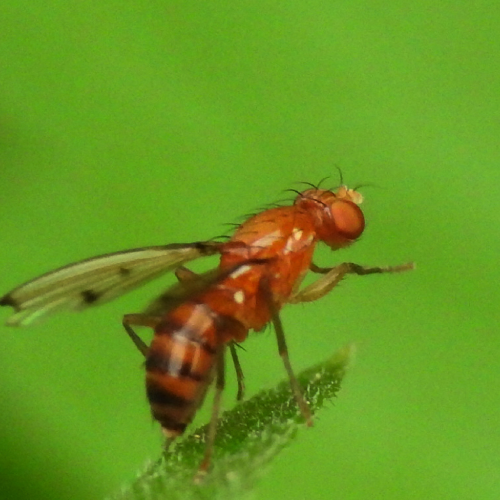Fruit Fly

Proud Supporter of Disabled Veterans
No Contracts
Services provided without written contracts.
Introduction to
Fruit flies, scientifically known as Drosophila melanogaster, are small insects commonly found in homes, restaurants, and grocery stores. They are attracted to ripe, fermenting, or decaying fruits and vegetables, where they lay their eggs. While they are generally considered a nuisance, fruit flies can also contaminate food with bacteria and other pathogens. Understanding their biology, habits, and effective prevention methods is essential for managing infestations and maintaining a clean environment.
Recognition
Fruit flies are tiny insects, typically measuring 1/8 inch (3-4 mm) in length. They have a tan or light brown body, bright red eyes, and translucent wings. Their small size and rapid flight make them easy to identify, especially when swarming around ripe or decaying fruit. Fruit flies can be mistaken for other small flies like fungus gnats or drain flies, but their preference for fruit and their red eyes help distinguish them. Their presence is often indicated by adult flies hovering around fruit, vegetables, or other organic materials.
Biology
Fruit flies undergo complete metamorphosis, progressing through four life stages: egg, larva, pupa, and adult. Females lay hundreds of eggs on the surface of fermenting or decaying fruits and vegetables. The eggs hatch into larvae (maggots) within 24 to 30 hours, which then feed on the decaying material. After about five days, the larvae pupate, and adult flies emerge a few days later. The entire lifecycle can be completed in as little as one week under optimal conditions, leading to rapid population growth. Fruit flies feed on yeast and other microorganisms found on fermenting or rotting organic matter.
Habits
Fruit flies are highly attracted to fermenting and decaying organic matter, particularly fruits and vegetables. They are commonly found in kitchens, grocery stores, and restaurants where food is stored or processed. Fruit flies are most active during the day and are often seen hovering around food sources. They can also breed in drains, garbage disposals, empty bottles and cans, trash bins, and even mop buckets. Fruit flies can enter homes through open windows and doors or by hitchhiking on produce brought in from outside.
Prevention
Preventing fruit fly infestations involves maintaining good sanitation and eliminating breeding sites. Store fruits and vegetables in the refrigerator or in sealed containers. Dispose of overripe or decaying produce promptly. Regularly clean kitchen counters, sinks, drains, and garbage disposals to remove any food residue. Keep trash bins covered and take out the trash regularly. Rinse bottles and cans before recycling them. Inspect and clean any areas where moisture and organic matter can accumulate. Using fruit fly traps can also help monitor and reduce the population.
Professional
If fruit fly infestations become unmanageable, professional pest control services can provide effective solutions. STL Pest Control offers comprehensive treatments to eliminate fruit fly populations from homes and commercial establishments. Their technicians are trained to identify breeding sites and apply appropriate treatments, including traps, insecticidal sprays, and integrated pest management techniques. In severe cases, they may recommend ongoing maintenance plans to keep fruit fly populations under control. Professional services ensure thorough and long-lasting control, providing peace of mind and a cleaner living environment.



Our Office







